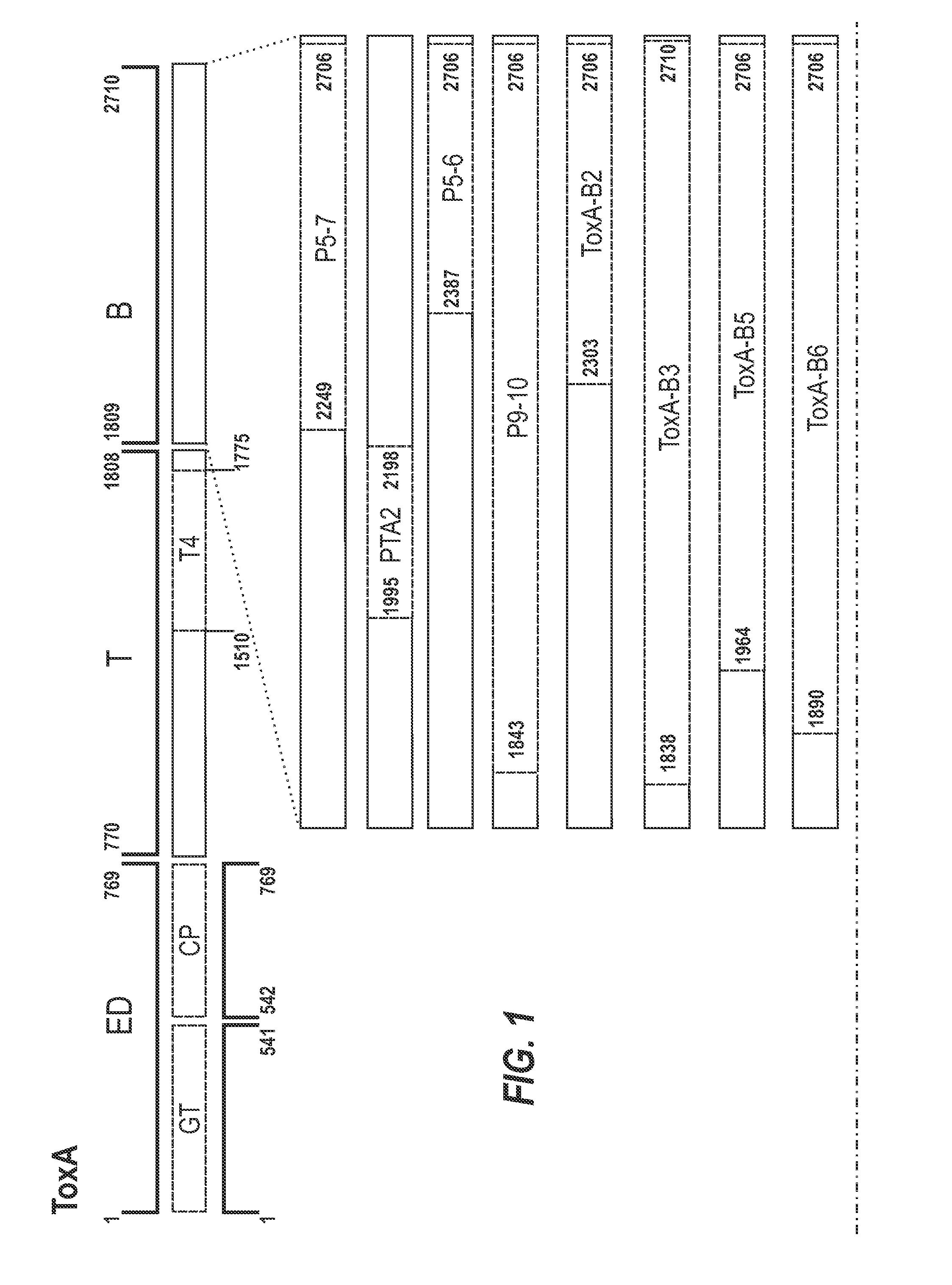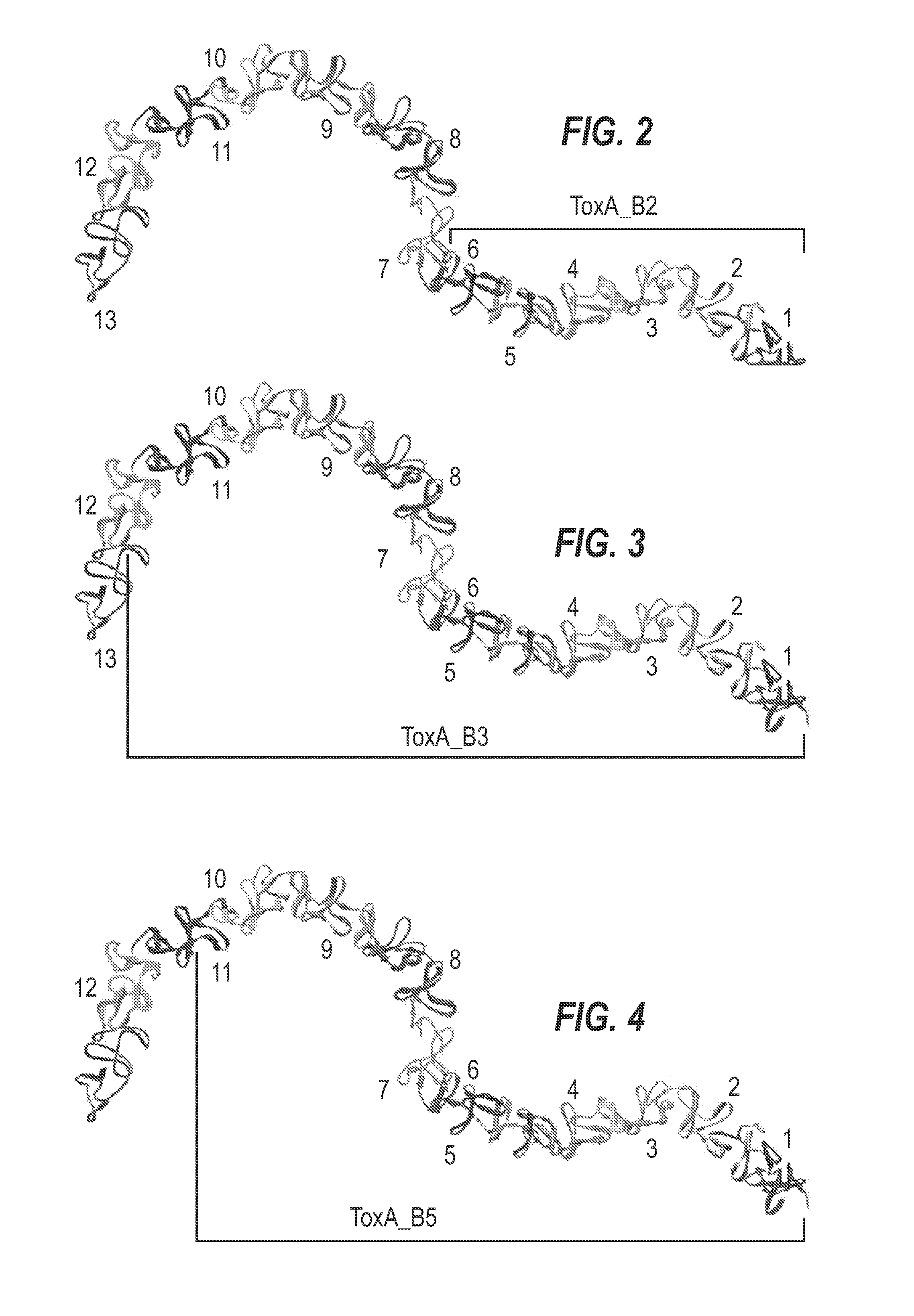Clostridium difficile toxin-based vaccine
a technology of clostridium difficile and toxin, which is applied in the direction of antibacterial agents, immunological disorders, antibody medical ingredients, etc., can solve the problems of ineffective cdad vaccine, variable and often limited success, and increase the risk of recurrence, so as to facilitate cloning or purification and enhance protein stability
- Summary
- Abstract
- Description
- Claims
- Application Information
AI Technical Summary
Benefits of technology
Problems solved by technology
Method used
Image
Examples
Embodiment Construction
[0330]The inventors identified recombinant fragments of TcdA and TcdB which may be used as immunogens for use in a vaccine to prevent CDAD.
Fragments
[0331]A schematic representation of the experimental approach is provided in FIG. 8. The inventors designed a panel of toxin-based fragments of TcdA and TcdB (11 fragments of TcdA and 6 fragments of TcdB). The toxin-based fragments used in this study are described in FIG. 1. These fragments were chosen to cover as far as possible the whole lengths of TcdA and TcdB, and the boundaries of these fragments were determined on the basis of their crystal structures. In the case of the cell binding domains of ToxA and ToxB (see FIG. 1 for summary), computer models were used. By using recombinant techniques, it is possible to use an expression system e.g. E. coli, Brevibacillus choshinensis, etc., to easily generate polypeptide fragments and which are more stable and resistant to degradation than inactivated toxoids, as well also avoid many of th...
PUM
| Property | Measurement | Unit |
|---|---|---|
| molecular weight | aaaaa | aaaaa |
| molecular weight | aaaaa | aaaaa |
| osmolality | aaaaa | aaaaa |
Abstract
Description
Claims
Application Information
 Login to View More
Login to View More - R&D
- Intellectual Property
- Life Sciences
- Materials
- Tech Scout
- Unparalleled Data Quality
- Higher Quality Content
- 60% Fewer Hallucinations
Browse by: Latest US Patents, China's latest patents, Technical Efficacy Thesaurus, Application Domain, Technology Topic, Popular Technical Reports.
© 2025 PatSnap. All rights reserved.Legal|Privacy policy|Modern Slavery Act Transparency Statement|Sitemap|About US| Contact US: help@patsnap.com



